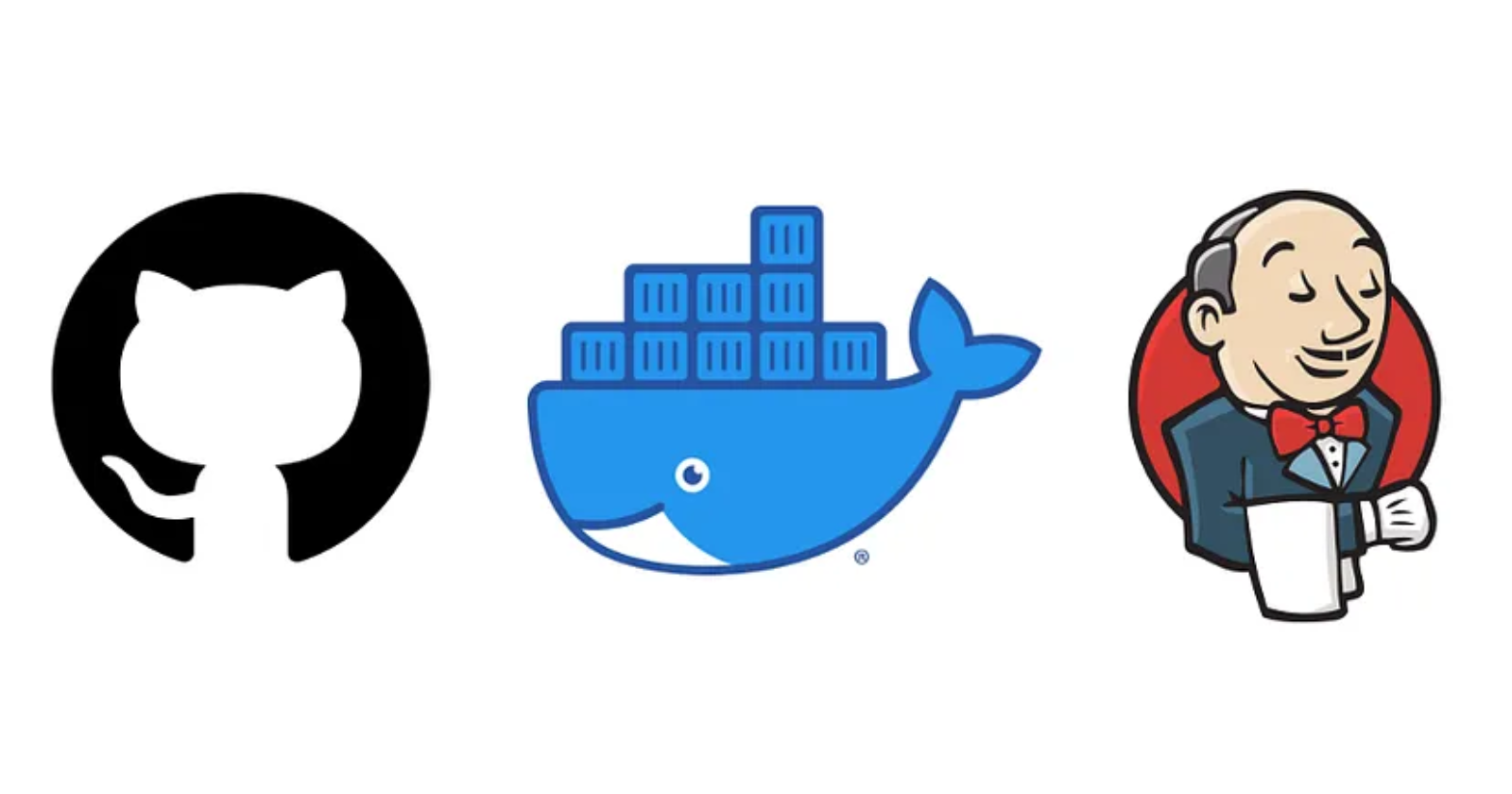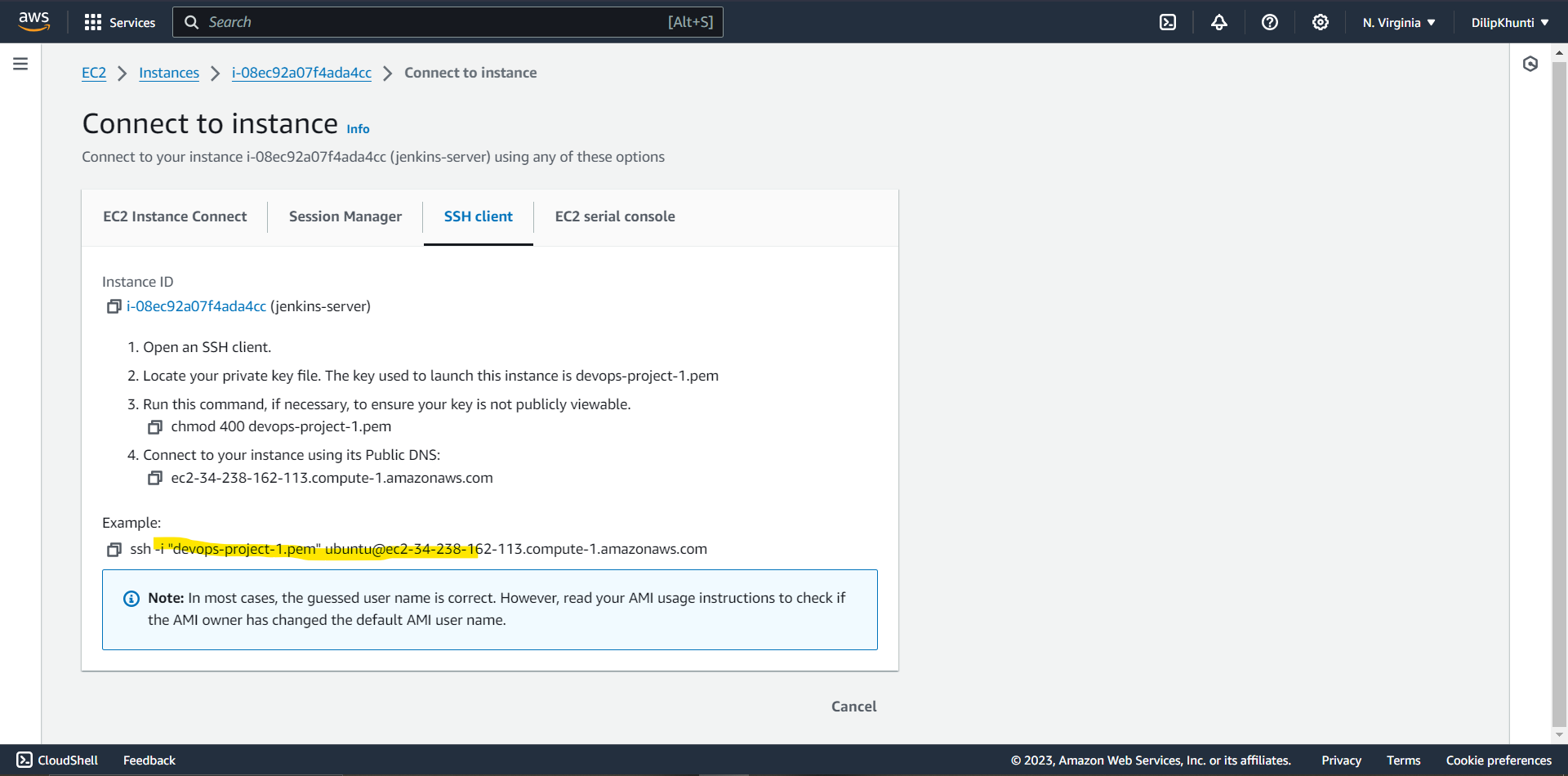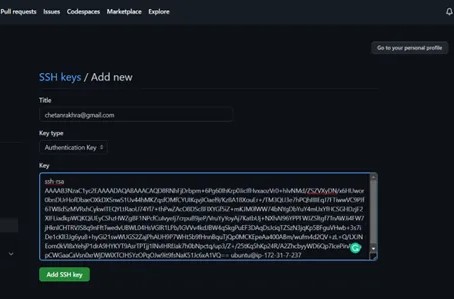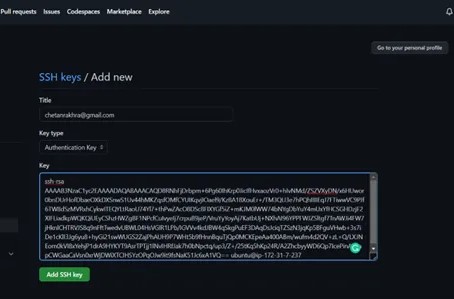project 1 (Devops)-Jenkins Cicd With GitHub Webhook
 Dilip Khunti
Dilip Khunti
Streamlining Deployment: Jenkins Declarative Pipeline for Docker Applications on EC2 with GitHub Webhook Integration
Follow the steps:
1. First of all, go to the AWS portal, and create a new instance. As,
· Name: jenkins-server
· AMI: ubuntu.
· Instance type: t2.micro (free tier).
· Key pair login: Create > docker.pem.
· Allow HTTP.
· Allow HTTPS.
(Download the .pem file.)
Click on Launch Instance.

2. Now, connect to the EC2 instance that you have created. Copy the SSH from server:

3. Go to the download folder, where the .pem file is placed and open the terminal in the same location, and paste the SSH.
4. In the machine, run the command
“ssh-keygen”
This will generate public and private keys in the machine.
Id_rsa — Private Key.
Id_rsa.pub — Public Key.
5. Install Docker to the machine by running,
“Sudo apt install docker.io”
give docker permission to user by running "sudo usermod -aG docker $USER"
check installation by "docker -v" and reboot system by "sudo reboot"

6. Now we will install Jenkins on the machine, by following this link
https://www.jenkins.io/doc/book/installing/linux/
This will automatically install java with Jenkins.
or directly paste this commands
sudo apt update
sudo apt install openjdk-17-jre-headless
check installation by "java -version"

Download the Jenkins key and save it to the keyring
curl -fsSLhttps://pkg.jenkins.io/debian/jenkins.io-2023.key| sudo gpg --dearmor -o /usr/share/keyrings/jenkins-keyring.gpgAdd the Jenkins repository to the sources list
echo "deb [signed-by=/usr/share/keyrings/jenkins-keyring.gpg]https://pkg.jenkins.io/debianbinary/" | sudo tee /etc/apt/sources.list.d/jenkins.list > /dev/nullUpdate the package lists
sudo apt-get updateInstall Jenkins and its dependencies
sudo apt-get install jenkinscheck installation by "
service jenkins status"
8. Now, we will allow ports 8080 and 8001 for this machine from a security group. We can find the security group in the VM description. Now, here we need to allow “Inbound Rule” as below:
Now, Copy the Public Ip of the machine and paste it to the browser to access the Jenkins portal. As,
“54.193.49.139:8080”
10. We need an Administrator Password to unlock this. For that, go to the provided highlighted path in the upper screenshot.
“cat /var/lib/Jenkins/secrets/initialAdminPassword”

Paste this password in the “Administrator Password” Column.
11. Now Click on, “Install Suggested Plugins”

12. This will now install the suggested plugins. As
13. Now, Jenkins will ask us to create the First Admin User.
15. The Jenkins homepage will look like this,
16. Now, we will create a CI/CD pipeline, which will fetch the code from GitHub.
17. From Jenkins Dashboard, Click on “New Item”.
18. Now, Add the name as
Name: todo-app
Project: Freestyle project
Click “Ok”.
19. Here, we need to fill up the description.
20. In Source Code Management, select Git and Add Repository URL and Credentials.
(If there is not any added credential, we need to add)
21. In Build Step, select Execute Shell and write the following command to build Docker image and from Docker image, we will create a container.
22. Now, Click on Build Now. And the build will be started, in the build history.
23. In Output Console,
24. After getting success, In the browser, search for
<public_ip_of_ec2:8001>
Now, our goal is,
· Whenever the developer commits their code in GitHub, after every commit, it should reflect in the live web app.
· For that, we will use “GitScm polling”.
· Every time, a developer made a commit, a trigger will run automatically, which will rebuild the image and run a container on your behalf as a part of automation that will run the pipeline automatically.
25. Now, configure the project again, and add
Build Trigger: GitHub hook trigger for GitScm polling.
Description: GitHub webhook integration
26. We need to install the “Git Integration” plugin from Manage Jenkins, by following the path,
(Manage Jenkins > Manage Plugins > Git Integration).
27. Now, Goto GitHub > Settings > SSH and GPG Keys > New SSH Key.
Add details as
Title: chetanrakhra@gmail.com
Key type: <public_key>

28. To get the Public key, open the “id_rsa.pub” file and copy the content. (Public Key)
29. Now, we need to go to GitHub and create a new SSH and GPG Key.
GitHub > Repo “react-django-demo-app” > Settings > Webhooks.
30. Add the following details,
Payload URL: http://<public_ip_of_ec2>:8080/github-webhook/
Content-Type: application/json
Which event would you like to trigger this webhook?
o Just the push event.
Active: True
Click on “Add Webhook”.
31. Now, Save the configured project.

32. Do some changes in the code and push to GitHub, this will automatically run a pipeline, and the new code will be Live.
— — — — — — — — — — — — — — — — — — — — — — — — — — — — — — — — — — — — — —
Hope you found this helpful. Do connect/ follow for more such content.
~Dilip khunti
Subscribe to my newsletter
Read articles from Dilip Khunti directly inside your inbox. Subscribe to the newsletter, and don't miss out.
Written by

Dilip Khunti
Dilip Khunti
Hello World! I am Dilip, a DevOps Engineer skilled in Kubernetes, Jenkins, Terraform, AWS, and Azure. With a background in web development.currently pursuing a B.Tech in Information Technology. In the past year, I've actively explored and learned to develop my skills in cloud and DevOps. I've engaged in tasks such as automating infrastructure, working with containers, navigating cloud platforms(Aws and Azure), and setting up continuous integration and deployment (CI/CD) with hands on exceperience.